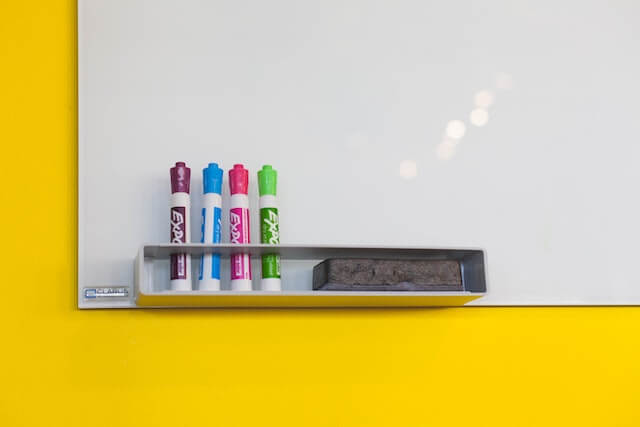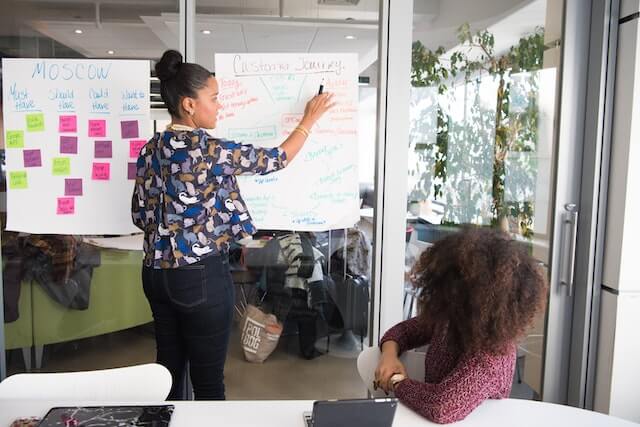Brainstorming can be a great way for entrepreneurs and small ventures to come up with new ideas for products and services. It’s also a great way to get your team’s creative juices flowing. But if you’re not sure how to brainstorm effectively, we can help guide the way.
Let’s review different approaches you can try, along with key benefits that can help boost your businesses’ success.
Related: Why small ventures need business agility
9 tips on how to brainstorm
Before you start your brainstorm session, it’s important to set up some ground rules that’ll help keep ideas focused and on-topic.
This is especially true when it comes to large groups, as there will be plenty of differing ideas and viewpoints.
Take a peek at the tips below to ensure you get the most out of your brainstorming sessions.
1. Quantity over quality
Brainstorming is all about quantity over quality. Don’t worry about the quality of the ideas to begin with — just write them all down, and encourage all team members to participate. Brainstorming with others or in groups can be a great way to increase the quantity of ideas generated.
2. Give them advance notice
It is always helpful to allocate a time for the brainstorming session in advance. Give participants notice to get them thinking before the meeting. This allows for preparation and ensures productivity when it comes to brainstorming.
3. Change of scenery

A change of scenery helps to inspire new ideas. Sometimes your everyday workspace can inhibit your creative flow. Getting outside or finding a new location can encourage inspiration. Look at holding your session outside the office or in an open meeting room or break area.
4. Timing is key
Set a designated time frame for the brainstorming session. Shorter is always better as it encourages success. Ending the session on an inspirational high is better than feeling mentally fatigued.
5. Room setup
Setting the room up in a circle is a helpful way to remove any sense of hierarchy and to encourage equal contribution and communication.
Working as a team is easier when everyone can see each other.
It allows all members to contribute equally.
6. Structure the session
Appointing a host of the brainstorm session who encourages positive feedback and discourages judgement and negativity is a good idea. All ideas are valid with brainstorming. A great way to keep order is to go around the room one-by-one. This avoids confusion and allows the next person to feed off and add to the previous person’s ideas.
7. Set an agenda
Setting an agenda and topic of discussion in advance keeps the session focused and avoids veering off track. It allows each person to prepare and know what to expect.
8. Take notes
With any brainstorming session, taking notes is vital. It can be helpful to appoint a single note-taker to avoid confusion. Using a large piece of paper stuck on a wall or whiteboard for everyone to see can be a great way to document all the suggested ideas.

9. Schedule a follow-up
Scheduling a follow-up session is a useful way to workshop the ideas further that were generated in the brainstorming session. A follow up is essential to narrow down ideas and implement the most viable ones.
Related: 8 essential small business management skills
5 brainstorming methods to try
If you’re looking at how to brainstorm there are numerous methods you can try. Five of the more popular ones include:
Brainwriting
Everyone begins writing down three ideas in a set time.
Going in one direction around the circle everyone passes their ideas onto the person next to them.
They then add further points and strategies. This process continues until all ideas have been passed around. The group then discusses the ideas as a collective.
Rapid ideation
This tactic asks each participant to write down as many ideas as they can within a set time frame. The ideas are then shared to the group. Writing ideas down quickly can prevent people from overthinking before sharing.
Figure storming
The group picks a well-known figure or role model. It could be a:
- Public figure
- Fictional character
- Management person not in the room
The group then discusses the topic from the point of view of the chosen figure. For example, what ideas would they suggest? This can be a fun way to approach idea generation and remove any hesitancy of participants to share their ideas.
Mind mapping
Mind maps are a great visual way to document ideas in a brainstorming session. Start with the topic in the centre first. Then, proceed drawing branches of lines off the main topic that lead to the ideas suggested.
Brain netting
This method has increased in popularity in the online work environment. Using a cloud-based virtual collaboration software, teams share ideas and responses engaging in virtual brainstorming.
When brainstorming is the answer
Whether by yourself or in a group, the applications for brainstorming are numerous. Some uses include:
- Naming a business, product or service
- Identifying new products and services to offer
- Brainstorming ideas to reduce production costs without sacrificing quality
- Identifying ways to engage with your ideal customer
- Generating new marketing ideas
As an exercise, brainstorming can be a valuable strategy for any business. You may think that brainstorming requires a definite end goal and final decision. This is not the case.
It is more about fostering creativity and allowing space for a variety of ideas to be brought to the table. These ideas can then be developed further to find the best result or solution.
Benefits of group thinking

Aside from idea generation, there are many benefits of brainstorming. If you’re trying to figure out how to brainstorm effectively, you’re going to want to know the key reasons it can help your business succeed. Below, we’ll list the top three reasons brainstorming is essential for any venture.
Fosters team morale
Holding group brainstorming sessions is a great team-building exercise. Spending time together in a supportive, encouraging environment can boost team morale.
Increases creative thinking
Day-to-day job tasks can become monotonous. A brainstorming session encourages creativity and productivity. Different to a normal meeting, brainstorming removes the sense of pressure to have answers and encourages multiple idea generation.
Generates multiple ideas
Brainstorming particularly in a group will generate a larger quantity of ideas. These ideas can then be workshopped further to find the best one.
Make brainstorming your new superpower
When thinking about how to brainstorm, remember quantity over quality. No idea is a bad idea. Brainstorming is a great way to generate new ideas, build team rapport and encourage creative flow.
Why not organise a brainstorming session with your team members or colleagues? Remember, a change of scenery is always helpful to encourage creative thinking when brainstorming.





